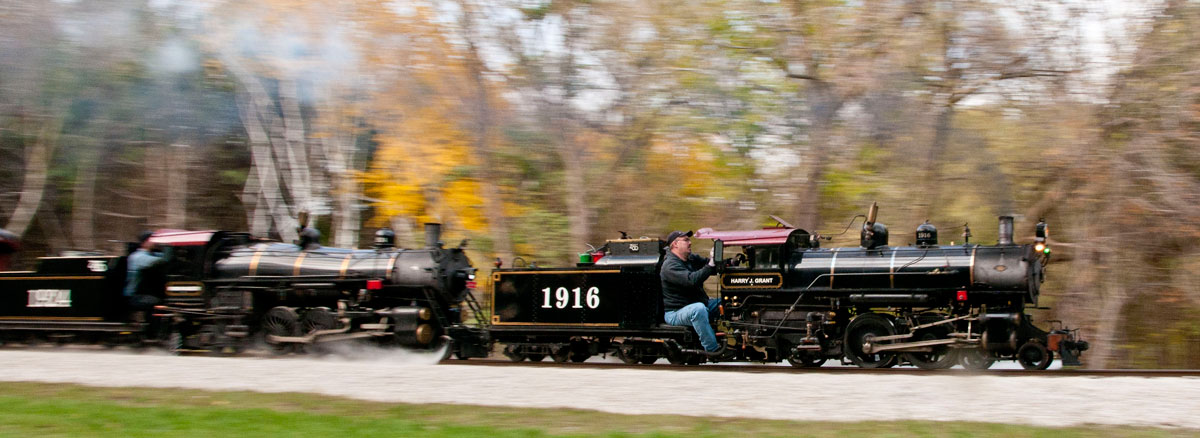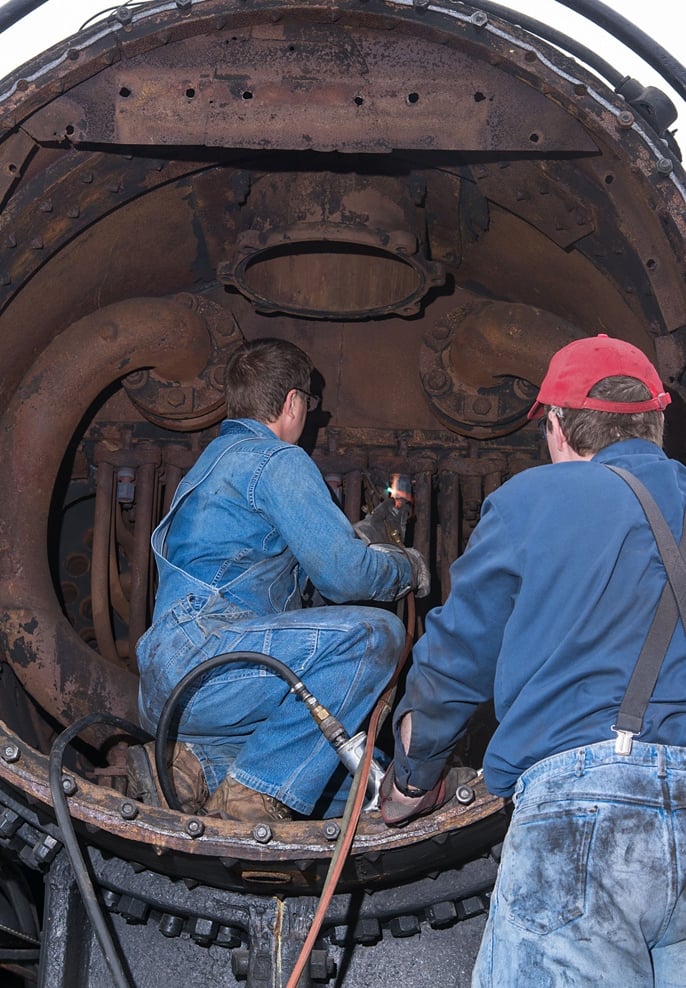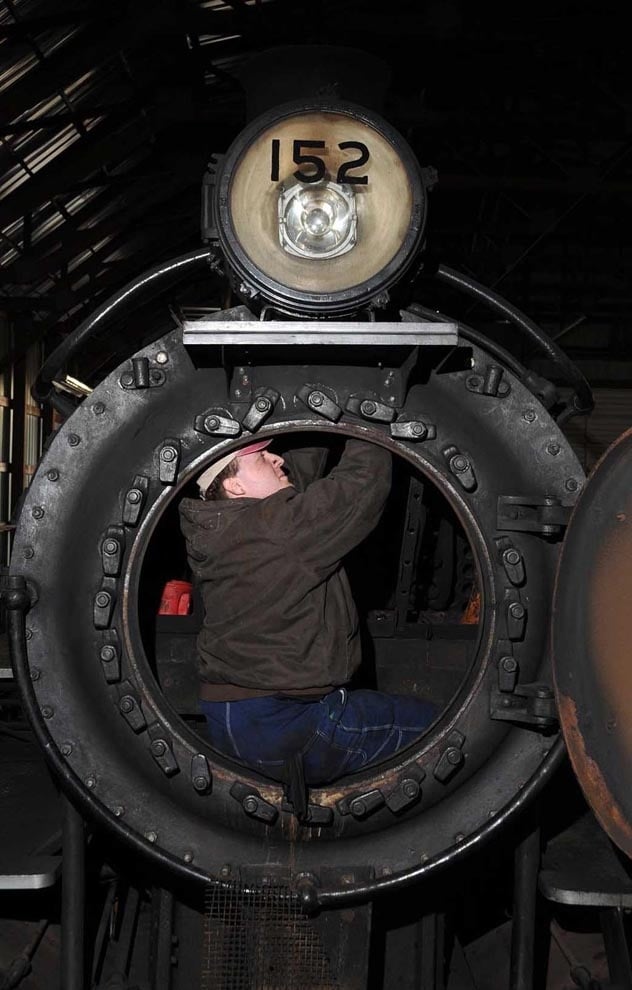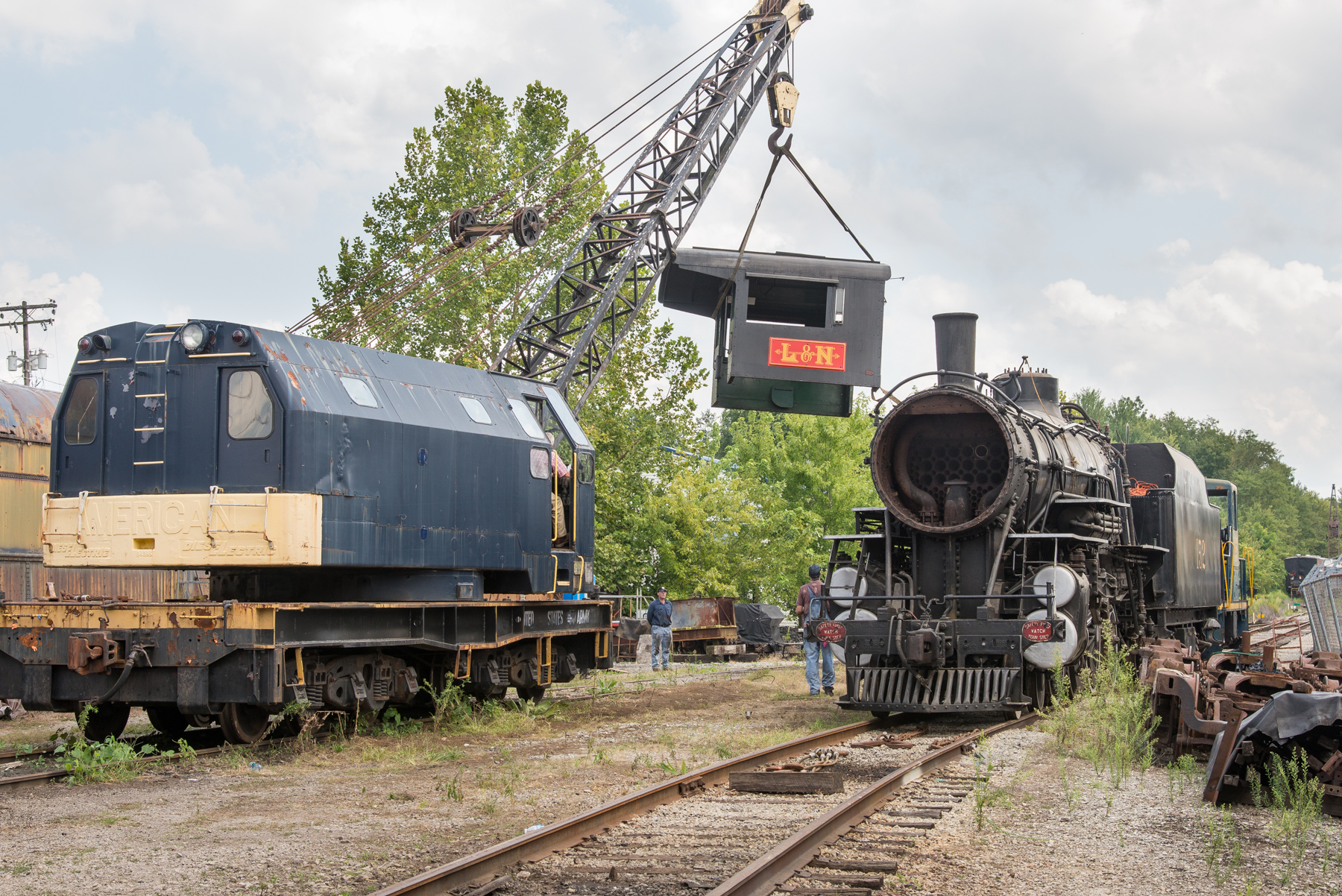The CSR Engineering Team will work hand-in-hand with KRM volunteers and staff in completing the inspection. Already, the 152 Restoration Committee and its volunteers have begun preparing the locomotive and boiler for inspection, including removal of boiler tubes and flues, boiler jacketing, firebox components and more. Once the pressure vessel and locomotive are cleaned and ready for inspection, CSR will send a crew to inspect the boiler ultrasonically and perform an inspection of the overall locomotive and tender to determine what work needs to be done to return the locomotive to service.
“In making our selection of an Engineering Consultant, the Coalition for Sustainable Rail stood out because of its Team Members’ varied practical expertise, including experience on successful programs such as Santa Fe 3751, and Southern 630 and 4501, and their willingness to help us meet our goals for the project,” explained KRM 152 Project Manager Rob Minton. “We wanted to partner with a group of steam technicians that were both experienced with hands-on work and detailed engineering analysis to assist our team of volunteers.”
The KRM Steam Crew consists of about 15 volunteers led by Mark Johnson in the role of Master Mechanic and draws heavily on the experience of Joe Bratcher, Lewis Hicks, and Carl Cruger of the original restoration team. The CSR Engineering Team undertaking this work include its Senior Mechanical Engineer Wolf Fengler, MSME, Director of Project Management Rob Mangels, President Davidson Ward, and Technical Advisor Shane Meador.
“Keeping 110-year-old locomotives under steam safely and efficiently is of extreme importance to the continued operation of historic rail equipment in the U.S.,” said CSR’s Wolf Fengler. “As we have done with our work on the Harz Narrow Gauge Railways in Germany, our Engineering Team is prepared to undertake this work with the highest regard for safety, technological soundness, and, above all, historical integrity.”












